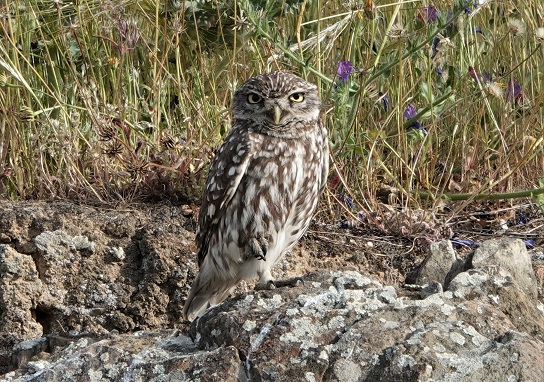Cranes and Quinces
It is as if by magic and although it happens every year, it always amazes and surprises. A week ago the landscape was parched yellow, then we had two days of (very belated) rain and the temperatures dropped to the more seasonal low twenties. There has been an utter transformation with the pastures and plains turning emerald green. Looking closely at the ground, every square centimetre is filling with sprouting grass shoots and germinating seedlings. Out on the plains, there are thousands of the delightfully named ephmeral Autumn Snowflake: a tiny snowdrop-like flower on the most slender of reddish-brown stalks, along with the delicate white Narcissus serotinus, a widespread autumn-flowering bulb of understated beauty: six rather narrow white petals with an orange-yellow cup. Despite being early November, a few butterflies are still on the wing: Clouded Yellows, Red Admirals, whilst the Long-tailed Blues and Lang's Short-tailed Blues persist on the Daphne growing in our garden.
Autumn is marked also, of course, by the arrival of the Common Cranes, which in their own way also transform the landscape, or rather soundscape, with their gorgeous and evocative trumpeting becoming an almost constant sound whenever one is close to the their feeding and roosting areas. Perhaps a few days later in arriving than usual this year, and numbers are still building up (the winter peak is not normally reached until late November), there were nevertheless several thousand already looking quite at home on the rice and maize stubble fields just to the south of us. As is normal, some elected to feed in family groups, a pair of adults with one or two brown-headed juveniles, whilst others were in larger flocks. In the distance, lines and broken skeins of cranes moved against a dramatic sky where shafts of sunlght pierced the clouds. In a period of sunshine, a pair of Golden Eagles took to the wing, soaring with buoyant flight against a pale blue sky, whilst a Black Stork made an appearance just minutes later.
Back at home, I completed another autumn task, labelling the thirty jars of quince jam that I had made a few days earlier. Although there were plenty of quinces on the trees this year, many had starting rotting on the tree, so it was a time-consuming task to select suitable specimens and prepare the fruit for jam-making. Interesting, my parents told me that exactly the same had happened to their quinces, growing in a sheltered spot in their garden in north Norfolk, in England. Fascinating. Still, I had enough fruit to make a delicious jam, which will keep our guests happy at breakfast right through winter and spring.





Comments